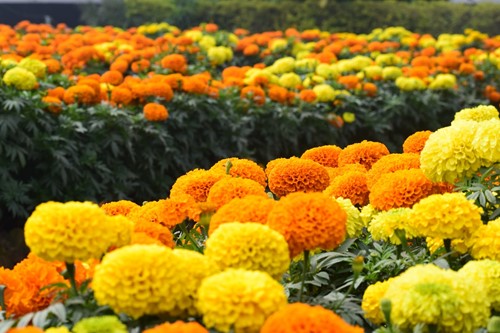
When planning an outdoor garden, many want to prioritize plants that attract and support local pollinators. Bees, butterflies and hummingbirds can add an enjoyable presence to your yard and help your plants and local ecosystem thrive. However, it's also important to protect and support your own animal friends. While many popular flowers and plants are toxic to dogs and cats, pentas and many other options are perfectly safe and help pollinators. Here are some suggestions:
Pentas
Pentas can grow in pots or in the soil anywhere they can get 6 to 8 hours of sun per day. These plants produce clusters of tiny, star-shaped flowers in white, pink, red and purple. Their blooms attract butterflies, hummingbirds and honeybees throughout their growing season. While supporting your local pollinators, they pose no threat to your pets--both the flowers and leaves of this plant are completely non-toxic.
Marigold
Marigolds are common in gardens everywhere for their ease of care and variety of colors. While they thrive in full sun and warm temperatures, they're hardy enough to be a great choice of flower for planting in containers or in the ground. Luckily, this popular and easy-to-grow flower attracts pollinators to your garden, particularly butterflies, and is completely safe for your pets.
Snapdragon
Snapdragons are dramatic looking plants with a strong fragrance. Their aroma helps make them especially attractive to bees, butterflies and hummingbirds. Most varieties of snapdragon are grown as annuals, but they can also be perennials in certain climates, providing tall clusters of blooms in white, pink, orange and red year after year. Snapdragons are a favorite among pollinators and pet-owners for being a safe source of beauty and nectar in any garden.
Plants to Avoid
Unfortunately, many great pollinator-supporting plants are not safe for your pets. Some of the most popular examples include lavender, chamomile, geranium and azaleas. If you choose to grow these plants, consider keeping them in containers where your pets cannot get to them. Otherwise, remember these suggestions for plants that help pollinators without putting your pets at risk.
About the Author

Bero Porter
"In every industry, there is a group of people distinguished by a passion for excellence and eagerness for new ideas. In residential and investment real estate, we are those people."
